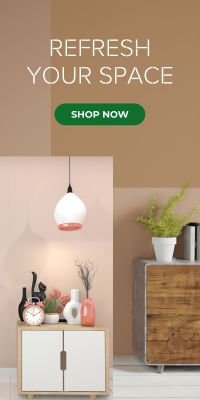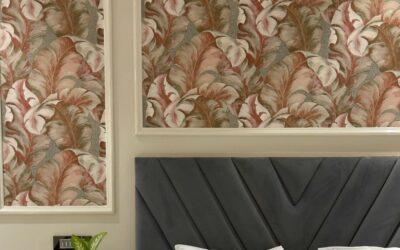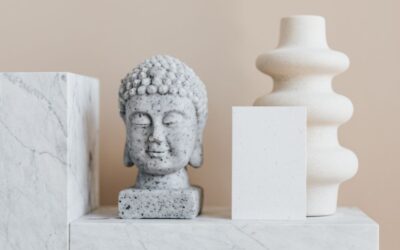Minimalist Spaces and the Art Dilemma
Minimalist spaces can be a challenge to decorate. Too little, and the room looks bare and sterile. Too much, and you risk losing the clean, serene feel that minimalism is known for. This delicate balance becomes even trickier in small spaces, where every piece of furniture or decor has a much larger visual impact.
Small spaces benefit tremendously from minimalist decor because it naturally creates a sense of calm and clarity. Light colours, sparse furnishings, and an emphasis on open, empty areas (known as white space) help rooms feel larger and more breathable. But the flip side is this: when you’re trying so hard to keep everything “just right”, it becomes easy to get overly cautious, avoiding anything that might disrupt the clean look. In this state of hyper-minimalism, even a single addition, like a pop of colour or a new decor item, can feel intrusive.
But Every Space Needs Art
Regardless of size or style, no interior is truly complete without art. Art brings soul to a space. It communicates mood, adds depth, and makes the space feel intentional rather than just empty. But what kind of art fits within a minimalist setting, especially when square footage is limited?
The answer: Geometric Art.
What Is Geometric Art?
Geometric art refers to artwork that utilises basic shapes such as circles, squares, triangles, lines, and angles, to create structured, visually compelling compositions. It introduces symmetry, repetition, and a sense of order. This style spans both modern and ancient traditions, from Islamic tile designs to Bauhaus posters, and it adapts beautifully to contemporary minimalist homes.
Why Geometric Art Works in Small Minimalist Spaces
Clean, Structured Aesthetic
Geometric art is characterised by clean lines and strong visual structure. These elements align perfectly with minimalist principles, reinforcing the idea of order and intentionality. There’s no visual noise, just clarity.
Enhances Spatial Flow
Small spaces can feel static or boxy. Geometric compositions, with their repeated lines and directional shapes, introduce visual movement. This guides the eye around the room, enhancing perceived spaciousness and keeping the environment from feeling dull.
Delivers Impact Without Clutter
One of the greatest advantages of geometric art is its ability to be bold yet refined. You can make a statement with a large, colourful geometric piece while still adhering to minimalist values. The simplicity of form means the artwork holds its ground without crowding the space.
Choosing the Right Art Size for Small Rooms
Go Big, Not Small
Contrary to popular belief, larger artworks can actually make a small space feel bigger. Here’s why: a large piece draws the eye upward or across a wall, creating an illusion of depth and height. This visual trick expands the perceived boundaries of the room.
If your ceiling is low, choose geometric art with vertical orientation or upward movement in the design. If your space is narrow, a horizontal piece can visually stretch the wall.
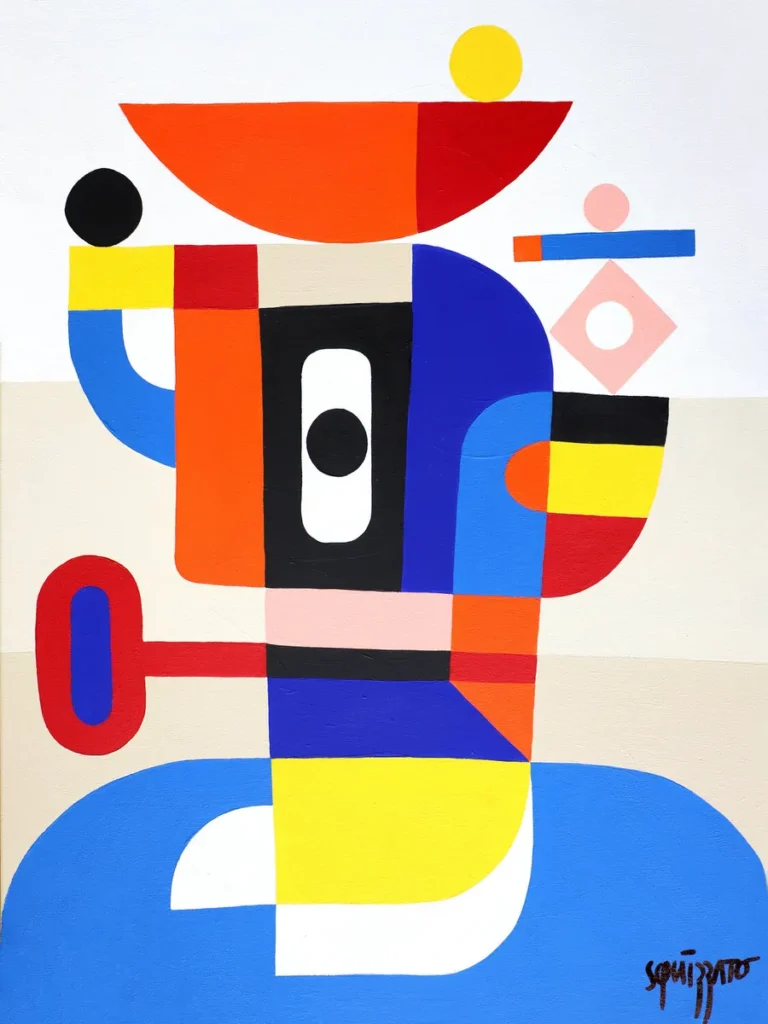
Pro Tip: Follow the Lines
Choose geometric art that contains elements guiding the eye in the direction you want to extend, for example, upward for height, sideways for width, or diagonally for movement and flow. The subject and line orientation matter just as much as the dimensions of the piece.
Although it can be tricky in small spaces, geometric art delivers the greatest visual impact when it’s placed with intentional spacing, particularly away from large or bulky furniture like bookshelves or wardrobes. Leaving just a bit of breathing room around the artwork allows it to stand on its own, enhancing rhythm and balance in the overall composition of the room. This negative space acts as a visual pause, helping the eye move effortlessly from one element to another without feeling cluttered or overwhelmed. Think of it like punctuation in design that is necessary for clarity and flow.
RELATED: Antony Squizzato: This Modernist Picasso Takes on Cubism and Abstraction
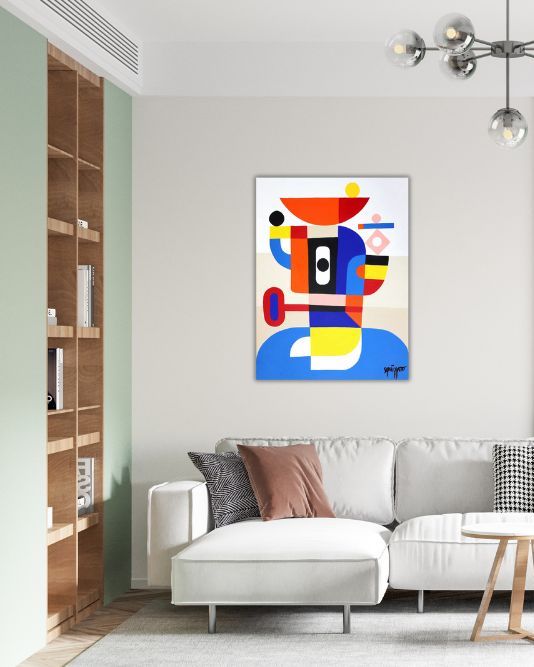
Look Out for Colour Harmony in Geometric Art
When choosing geometric art for a minimalist space, colour harmony plays a crucial role in determining the overall mood and impact. The colours you select, or deliberately contrast, can change how the artwork interacts with the room.
Just because your interior is minimalist doesn’t mean your art has to blend in. In fact, choosing a piece that contrasts sharply with your wall or furniture can create a stunning focal point, much like a bold accessory that elevates a simple outfit. A vibrant geometric artwork in red, blue, or mustard yellow can act like a jewel against neutral tones, instantly energising the room without overwhelming it.
That said, the internal colour relationships within the artwork also matter. Geometric art typically features sharp edges, distinct shapes, and clearly defined colour boundaries. Unlike abstract art that often uses blended gradients, geometric compositions depend on the contrast (or harmony) between colours to make their statement.
If you prefer a more cohesive or calming look, opt for geometric pieces that use complementary or analogous colours. These are tones that sit close to each other on the colour wheel. This reduces harsh visual breaks and helps the artwork integrate more seamlessly into the room’s design.
On the other hand, if you want your geometric art to command attention, choose designs with high-contrast colours, such as black and white, navy and gold, or red and teal. These combinations add vibrancy and dynamism, perfect for spaces that need a touch of drama.
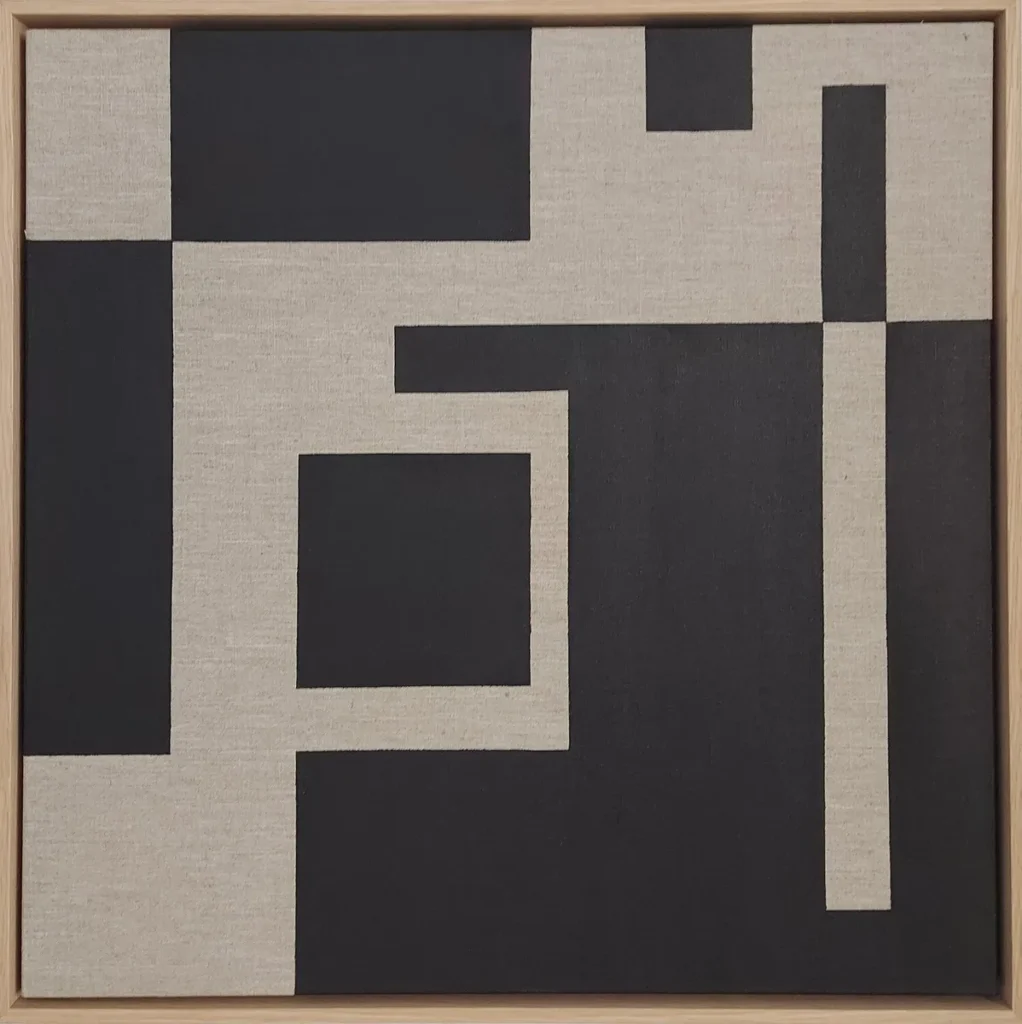
The Symmetry-Seeker: Why Geometric Art Brings Balance to Your Space
If you seek symmetry, geometric art is your perfect match. Symmetry-seekers crave for structure and predictability. They find comfort in order and precision.
Few art styles achieve symmetry with as much clarity and consistency as geometric art. The very foundation of geometry consists of shapes, repetition and proportion. This makes geometric art naturally aligned with symmetrical design that can be accomplished with a grid of circles, a mirrored triangle pattern, or evenly spaced lines. Symmetrical geometric compositions reinforce balance and order within a space.
Symmetrical artwork contributes to a sense of visual resolution. It doesn’t leave the eye searching or create tension. Instead, it signals completion, stability, and harmony. This is especially valuable in minimalist or small interiors, where too much asymmetry can make a space feel off-kilter or unresolved.
In psychological terms, symmetry is often associated with beauty, clarity, and even trust. So when symmetrical geometric art is placed, especially above a bed, sofa, or sideboard, it reinforces a feeling of composure and logic. For homeowners who prefer a tidy, structured environment, geometric art doesn’t just match the decor, it matches the mindset.
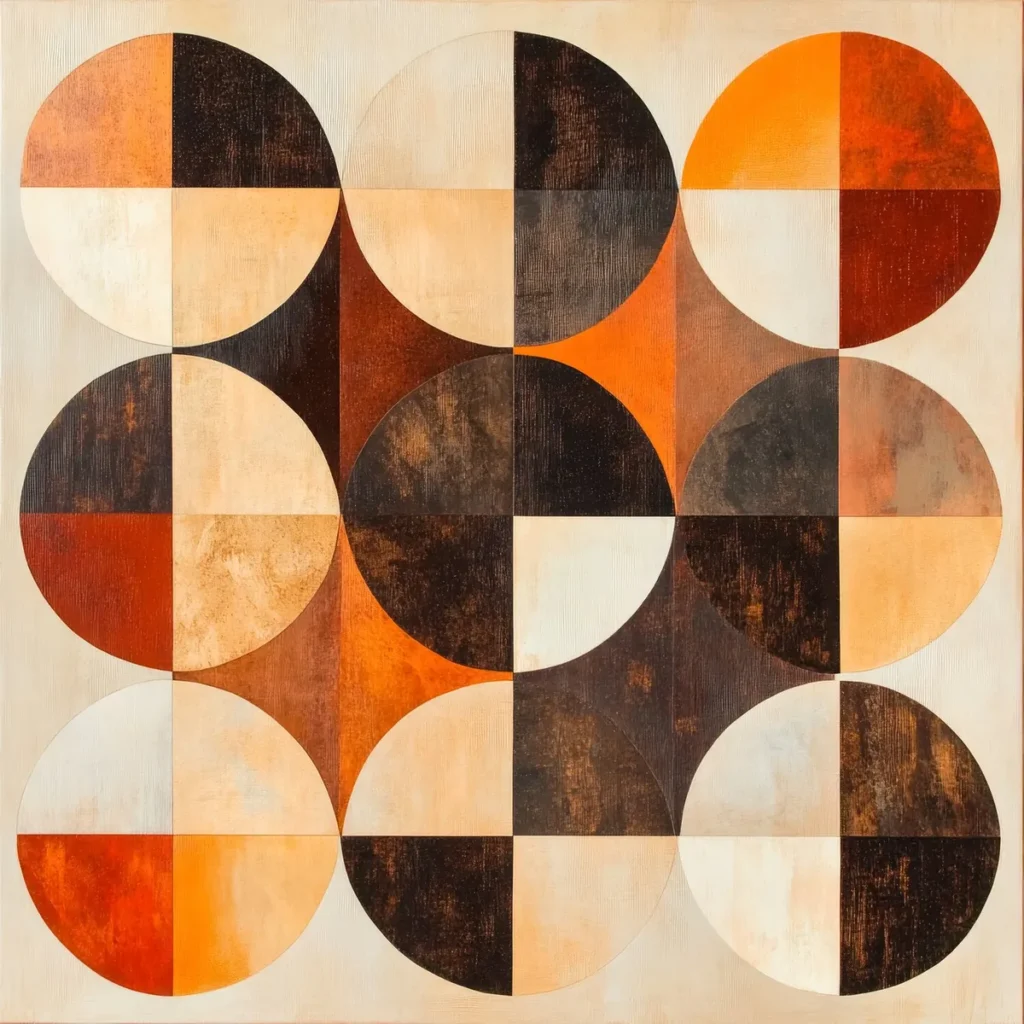
How to Make Geometric Art Feel More Personable and Inviting
Geometric art is often associated with precision, structure, and formality, but it doesn’t have to feel cold or impersonal. Because of its clean lines and sharp definitions, geometric art can sometimes appear stark, especially in minimalist settings. Fortunately, there are simple ways to introduce warmth and personality without compromising the style.
One approach is to look for geometric art that incorporates familiar forms. Shapes that suggest stairs, windows, houses, or architectural elements offer subtle references to everyday life. This connection makes the art more relatable and visually comforting, while still retaining its minimalist appeal.
You can also soften the look of geometric art by choosing pieces that feature rounded or circular shapes. Circles and curves introduce a sense of fluidity and femininity that balances out the rigidity of straight lines and sharp angles. This blend of structure and softness is especially effective in living rooms or bedrooms, where comfort and style must coexist.
Another great strategy is to pair geometric artwork with botanical themes or natural imagery. Some artists incorporate leaf-like patterns, tree silhouettes, or even florals into geometric compositions. This fusion of organic and geometric elements adds visual interest while softening the overall impact, making the piece feel more grounded and less clinical.
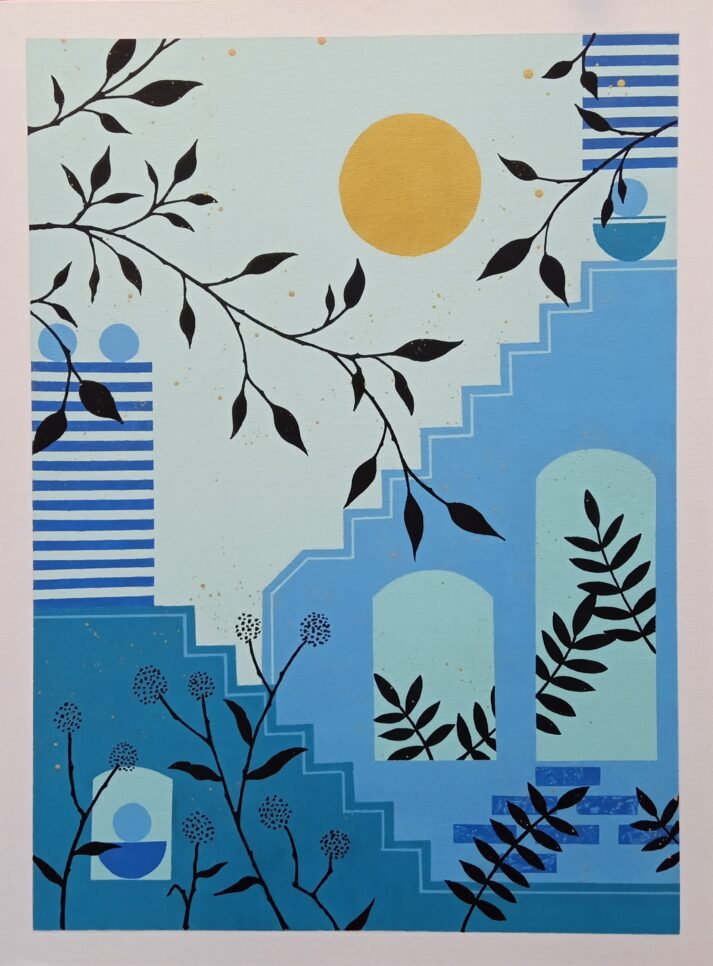
In essence, making geometric art more personable is about finding the right balance between structure and soul. Whether through shape, subject matter, or complementary themes, you can create a space that feels both refined and deeply inviting.
How to Make It All Work Together: Bringing Harmony to Your Space with Geometric Art
Start by assessing your wall layout and room proportions. Take clear photos of your space and digitally overlay the geometric art you’re considering onto the wall. This gives you a quick visual of how the piece might interact with the existing furniture, lighting, and wall color.
If your preference leans toward a more visually active or eclectic style, look for geometric art with densely clustered shapes or intricate patterns. These designs bring energy and movement to a space. However, in smaller rooms or in highly minimalist interiors, they can feel overpowering if not balanced correctly.
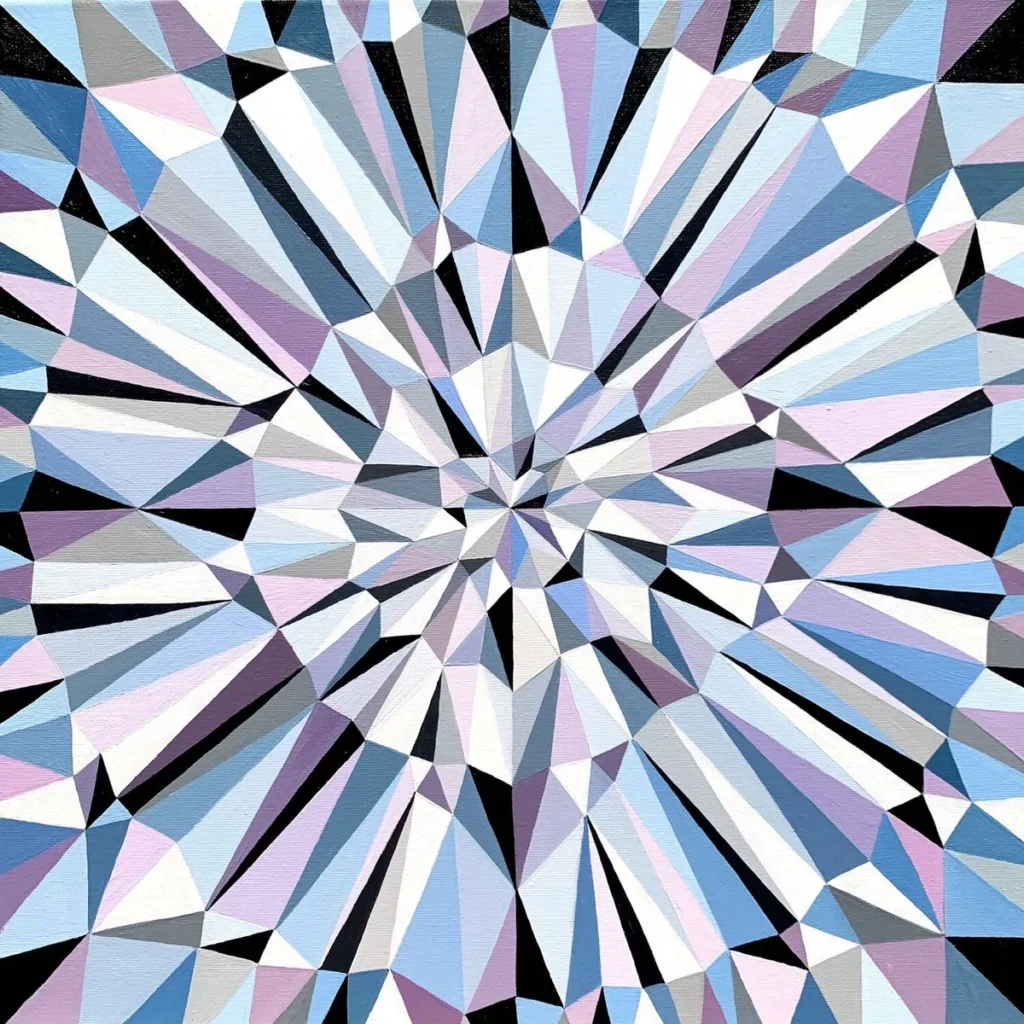
For a more open and serene look, choose geometric compositions where the shapes are spaced further apart, allowing more negative space. This spacing creates breathing room within the artwork itself, which helps prevent the wall from feeling cluttered or overstimulating.
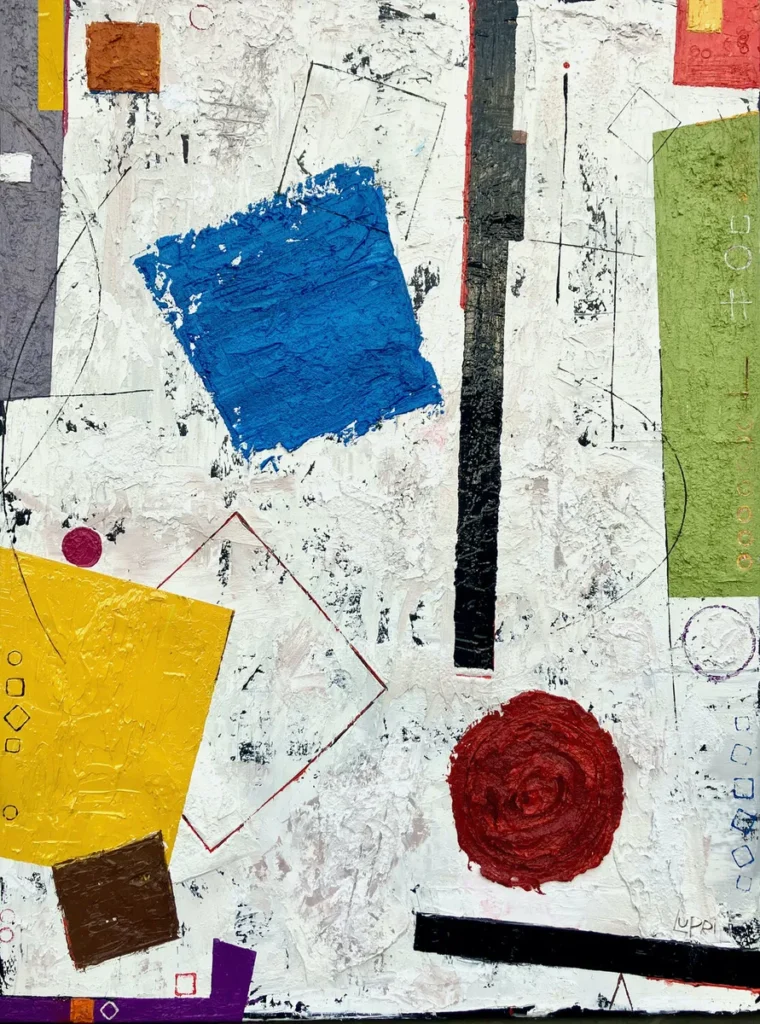
To tie everything together, introduce rhythm around the room by echoing colours or shapes from your artwork in other decor elements such as a cushion, vase, an area rug, or even a lamp. These repeated cues help unify the space without making it feel crowded. Just be mindful not to cluster all these accents too close together. Maintaining visual spacing between elements preserves the minimalist atmosphere, while still allowing your geometric art to shine as a thoughtful, curated focal point.



